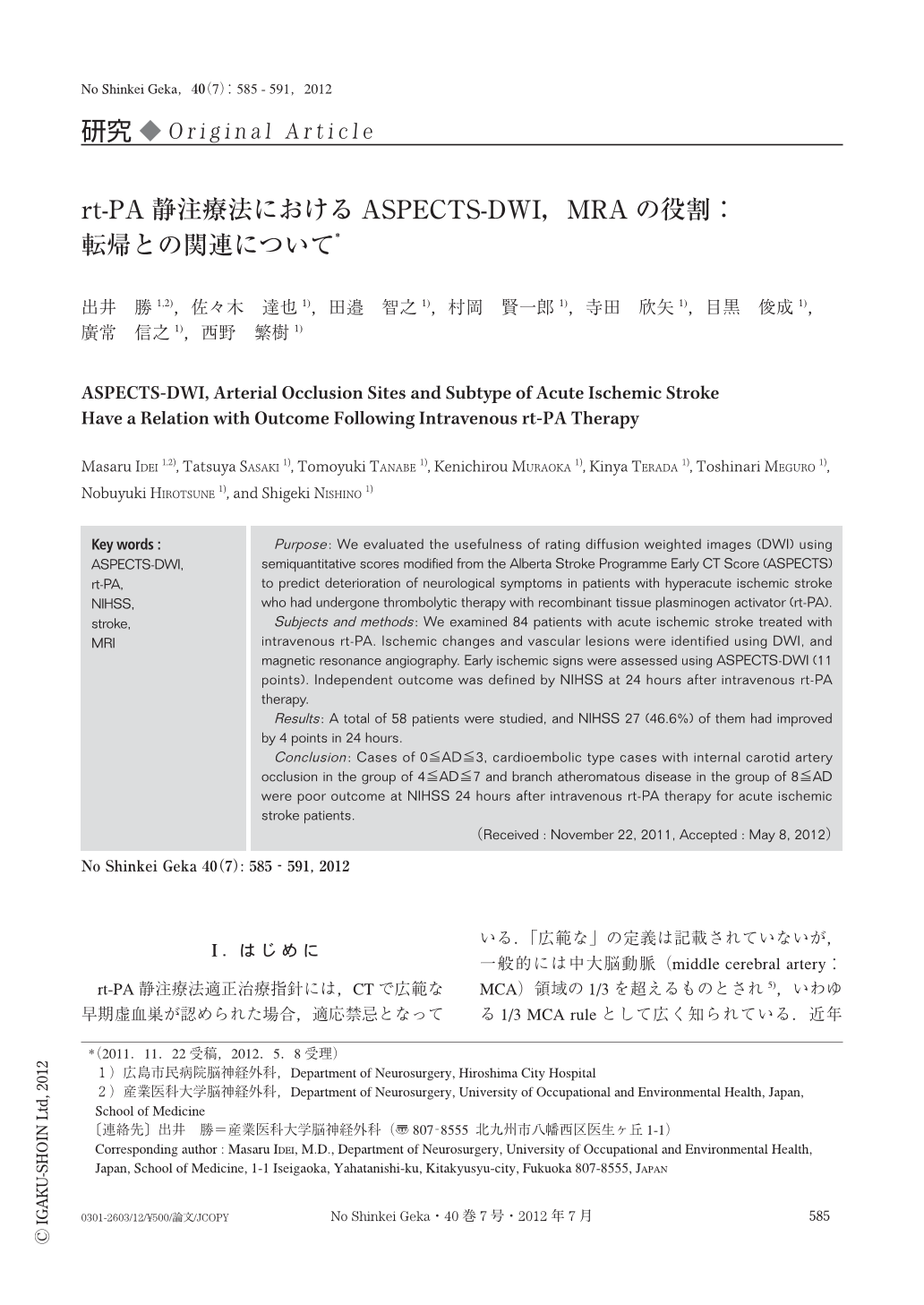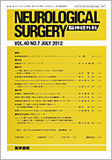Japanese
English
- 有料閲覧
- Abstract 文献概要
- 1ページ目 Look Inside
- 参考文献 Reference
Ⅰ.はじめに
rt-PA静注療法適正治療指針には,CTで広範な早期虚血巣が認められた場合,適応禁忌となっている.「広範な」の定義は記載されていないが,一般的には中大脳動脈(middle cerebral artery:MCA)領域の1/3を超えるものとされ5),いわゆる1/3 MCA ruleとして広く知られている.近年CTの判定基準として,Alberta Stroke Programme Early CT Score(ASPECTS)が用いられるようになり,患者転帰と相関するということが報告されている2).
一方で,日本は世界有数のMRI保有台数を誇っており,脳卒中急性期診断にMRIを施行し,rt-PA静注療法の適応を判定している施設も多いものと思われる.しかし,超急性期MRIの意義は未だ確立しておらず,MRAについても,脳血管評価は虚血性脳血管障害の治療方針決定に重要な情報を提供するが,rt-PA静注療法における意義は明らかでない8).
そこで,われわれはDWIを用いたASPECTS(ASPECTS-DWI:AD)とMRAによる閉塞血管評価,脳梗塞病型診断を行い,rt-PA静注療法後の転帰との関係を検討し,rt-PA静注療法におけるDWI,MRAの役割について考察し報告する.また,検討結果を踏まえ,現在われわれが遵守しているrt-PA静注療法適正治療指針の問題点について提起したい.
Purpose: We evaluated the usefulness of rating diffusion weighted images (DWI) using semiquantitative scores modified from the Alberta Stroke Programme Early CT Score (ASPECTS) to predict deterioration of neurological symptoms in patients with hyperacute ischemic stroke who had undergone thrombolytic therapy with recombinant tissue plasminogen activator (rt-PA).
Subjects and methods: We examined 84 patients with acute ischemic stroke treated with intravenous rt-PA. Ischemic changes and vascular lesions were identified using DWI, and magnetic resonance angiography. Early ischemic signs were assessed using ASPECTS-DWI (11 points). Independent outcome was defined by NIHSS at 24 hours after intravenous rt-PA therapy.
Results: A total of 58 patients were studied, and NIHSS 27 (46.6%) of them had improved by 4 points in 24 hours.
Conclusion: Cases of 0≦AD≦3,cardioembolic type cases with internal carotid artery occlusion in the group of 4≦AD≦7 and branch atheromatous disease in the group of 8≦AD were poor outcome at NIHSS 24 hours after intravenous rt-PA therapy for acute ischemic stroke patients.

Copyright © 2012, Igaku-Shoin Ltd. All rights reserved.


